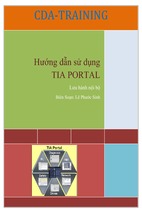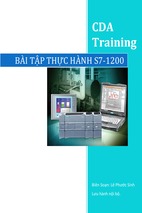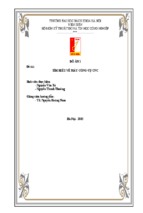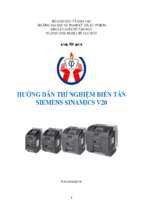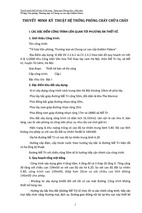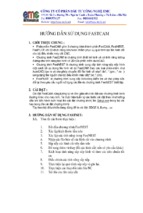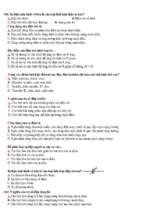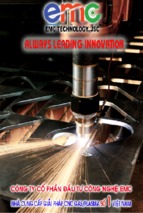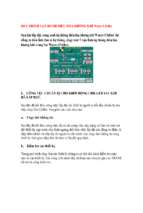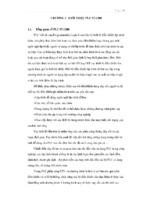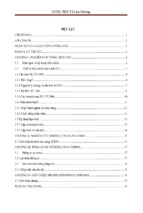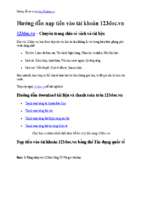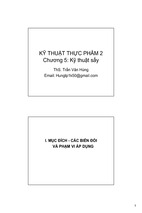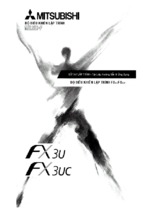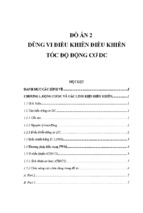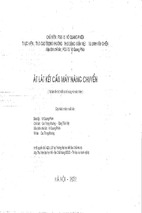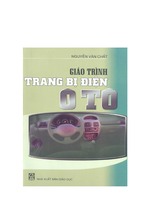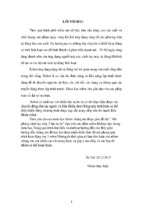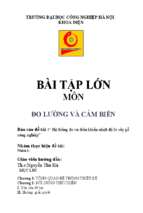Sustainable Manufacturing and Factory
Planning
Factory Planning Methodology
07.04.2017
Technische Universität Berlin
Institute for Machine Tools and Factory Management
Univ.-Prof. Dr.-Ing. Holger Kohl
© IWF TU Berlin
Page 1
Content
Definition
Objects, Goals, Stakeholders
Levels, Criteria, Procedures
General Planning Procedures
Specific Planning Procedures
References
Technische Universität Berlin
Institute for Machine Tools and Factory Management
Univ.-Prof. Dr.-Ing. Holger Kohl
Page 2
Content
Definition
Objects, Goals, Stakeholders
Levels, Criteria, Procedures
General Planning Procedures
Specific Planning Procedures
References
Technische Universität Berlin
Institute for Machine Tools and Factory Management
Univ.-Prof. Dr.-Ing. Holger Kohl
Page 3
Definition of Factory Planning
Factory planning is:
A systematic, goal-oriented, structured
process in order to plan factories from goal
definition to start of production with the
help of methods and tools
The factory planning process can have
Bildunterschriften
several reasons as well as different planning
cases. It can also include the adaptation of an
operative factory.
static.wiwo.de
The tasks are performed as projects in teams
Factory planning with CAD
and are controlled by methods of project
management.
www.img-tech.de
Planning of a shipyard
Technische Universität Berlin
Institute for Machine Tools and Factory Management
Univ.-Prof. Dr.-Ing. Holger Kohl
Source: [VDI 5200]
Page 4
Content
Definition
Objects, Goals, Stakeholders
Levels, Criteria, Procedures
General Planning Procedures
Specific Planning Procedures
References
Technische Universität Berlin
Institute for Machine Tools and Factory Management
Univ.-Prof. Dr.-Ing. Holger Kohl
Page 5
The Organizational Areas and Facilities of a Manufacturing Site
Production lines
Workforce
Product: material (preliminary /
Intermediate / finished product)
Manufacturing process stages,
procedure and plant
Factories are industrial
operations that pursue
profit-making and
cooperative goals
They have organizational
areas for which various
processes (functions) and
facilities must be planned
and carried out
Production and operating
facilities and
workstations are all
constituent parts of a
factory
The figure on the left
illustrates the various
organizational areas for
personnel and the
constituent parts of a
factory
Power and utility flow
(electricity, heat, gas, water)
Information flow
(planning and control)
Supply, disposal and
by-product flow
Technische Universität Berlin
Institute for Machine Tools and Factory Management
Univ.-Prof. Dr.-Ing. Holger Kohl
Training and qualification
PZH Hannover
Building
Source: [Sch-14]
Page 6
System Boundaries: Factory-wide Energy Flow
Three main types of consumers:
Manufacturing equipment
Auxiliary equipment
(e.g. pump systems for
compressed air)
Technical Building Services
(e.g. heating, lighting and
ventilation)
System definition on energy consumption of manufacturing systems
Technische Universität Berlin
Institute for Machine Tools and Factory Management
Univ.-Prof. Dr.-Ing. Holger Kohl
Source: [Thi-11]
Page 7
Equipment Point of View – Examples for Machine Tools and Transport Equipment
Machine tools:
Prefer usage of electric energy
Electric tools compared to hydraulic tools are 40-50% more
efficient provided electrical energy supply is available
Match and adjust machine tools to same voltage
Electrical transformers cause 10% - 15% energy losses
Keep need for energy transformation as low as possible
Transport equipment:
Use electric engines for forklift trucks instead of gasoline or diesel
engines:
No emissions in the storage
cemat.de
Weaker ventilation system is required
Lower energy consumption using recuperative braking system
Forklift truck with electric engine
Technische Universität Berlin
Institute for Machine Tools and Factory Management
Univ.-Prof. Dr.-Ing. Holger Kohl
Source: [Gho-12], [Mül-09]
Page 8
Equipment Point of View – Examples for Auxiliary Equipment
Drive systems:
Use energy-efficient drive systems and motors:
automation.siemens.com
With variable-frequency drive controlled engines
Using braking energy with regenerative converters or eddy
current brakes
E.g. High-Efficiency-Motors (HEM)
Pump systems for compressed air:
High-Efficiency-Motor
Most expensive energy used in a production system
Within the generation of compressed air only 4% of the input
energy remains in the compressed air; the rest is dissipated as
heat
airtechnologywest.com
70% - 90% of the input energy can be recovered as heat
Use waste heat for e.g. heating and hot water
Air Compressor
Technische Universität Berlin
Institute for Machine Tools and Factory Management
Univ.-Prof. Dr.-Ing. Holger Kohl
Source: [Mül-09]
Page 9
Equipment Point of View – Examples for Technical Building System I
Heating and cooling system:
Improve insulation of heating and cooling pipes and plant
components
Reduce frictional losses and leakages in heating and
cooling systems by implementing routine checks and
maintenance
Reduce the number of heat exchanges (high energy loss)
babo-team.de
bmwgroup.com
Implement heat-pumps for heat supply
Insolated cooling pipe
Technische Universität Berlin
Institute for Machine Tools and Factory Management
Univ.-Prof. Dr.-Ing. Holger Kohl
Heat pump
Source: [DIN-18599], [Mül-09]
Page 10
Equipment Point of View – Examples for Technical Building System II
Lighting:
Dimension as required:
diytrade.com
Differentiate lighting between workshop and workplace
Use predominantly fluorescent lamps with integrated, low-loss
ballast units in the workshop
Intense LED-lighting at the
Use constant lighting and intense lighting (LEDs) at the workplace workplace
Ventilation system:
and heat recovery grade of 50%
ves.co.uk
Use systems with low leakage of pressure
Ventilation system with heat recovery
Technische Universität Berlin
Institute for Machine Tools and Factory Management
Univ.-Prof. Dr.-Ing. Holger Kohl
Source: [Özh-12], [DIN-18599]
Page 11
Equipment Point of View – Examples for Technical Building System III
Building shell:
Improve insulation:
High external insulation of the north face of the building,
average external insulation of the south face
Take airtightness and thermal bridges into account
Air conditioning:
johnsoncontrols.com
Use water-cooled absorption chiller
Operates with production waste heat
Water-cooled absorption chiller
Technische Universität Berlin
Institute for Machine Tools and Factory Management
Univ.-Prof. Dr.-Ing. Holger Kohl
Source: [Özh-12], [DIN-18599]
Page 12
Introduction for Project Management
A Project is a series of related jobs usually directed
towards some major output and requires a significant
period of time to perform.
Project
Management describes the management
activities of planning, directing, and controlling
resources (people, equipment, material) to meet the
technical, cost and time constraints of a project.
Scope
And
Quality
Project Constraints
Scope
Quality
Cost
Resource Availability
Project Parameters
Technische Universität Berlin
Institute for Machine Tools and Factory Management
Univ.-Prof. Dr.-Ing. Holger Kohl
Time
Resource Availability
Source: [Wys-07]
Page 13
Project Characteristics and Value Creation Module
A project is a temporary effort undertaken to create a
unique product or service
Projects are
Planned,
Executed,
Controlled and monitored,
Limited in resources and
Performed by people
Projects can be looked at from perspectives of
Objects dealt with and
Phases of planning and executing
Technische Universität Berlin
Institute for Machine Tools and Factory Management
Univ.-Prof. Dr.-Ing. Holger Kohl
Page 14
Stakeholders
Stakeholders
Project
management
office
Stakeholders are persons
External
Agencies
Sponsor
or organizations (internal
or external):
Who are actively involved
Pressure
groups
Project
Management
Team
Other Project
Related
employees
Influence
Other
Project
Team
Members
in the project
Customers
/ Users
Whose interests may be
Consultants
positively or negatively
affected by the outcome
of the project
Project
Manager
Perform
Suppliers
Project Team
Stakeholder may exert
Competitors
Companies
influences over the
project, its deliverables,
and the project team
members
Influence
Project
Internal Stakeholder
Technische Universität Berlin
Institute for Machine Tools and Factory Management
Univ.-Prof. Dr.-Ing. Holger Kohl
External Stakeholder
Page 15
Technical Disciplines related to factory planning
Technical involved
Tasks
Project engineer and
project manager
Production facilities and factory design, functional design, budget, deadlines, quality
Architects
Building design
Specialist engineers
Structural analysis, heating, sanitary facilities, electrical systems
Production engineers
Machinery, equipment, jigs and fixtures, tools
Logisticians
Transport, handling, storage
IT engineers
Planning, control and automated systems
Design engineers
Product specifications
Business managers
Target costs, operating efficiency, budget
Ergonomists
Working time and remuneration systems, ergonomics
Psychologists
Conflict management, motivational techniques
Suppliers
Trades, technical building systems (TBS)
Authorities
Permits, approvals
Experts
Reports and surveys
Attorneys
Contracts
Technische Universität Berlin
Institute for Machine Tools and Factory Management
Univ.-Prof. Dr.-Ing. Holger Kohl
Source: [Sch-14]
Page 16
Project Realization (1/2)
There are various ways to realize a project (design, plan, equipment
www.images-en.busytrade.com
selection, erection of facilities or installation of equipment)
Typical standard components
If the expertise is available within the organization, these activities can
be carried out in-house
Standard practice is to outsource these activity (partly or completely) –
an option would be to become a direct stakeholder (owner or even
supporter) of the project
Typical ways to obtain equipment, such as:
Standard made (e.g. components and small equipment)
www.hitecproducts.no
Custom make (e.g. large equipment)
Turnkey solutions (e.g. factories and lines)
Turnkey solution for wellhead (oil exploration) control system
Technische Universität Berlin
Institute for Machine Tools and Factory Management
Univ.-Prof. Dr.-Ing. Holger Kohl
Page 17
Project Realization (2/2)
Various contracting arrangement are available, such as:
Systems, equipment or components providers
Project cost risk and control remains in full with the owner
Consultancy
Project control remains with the owner
The consultant only bears design related cost risk, the rest of the
project cost risk remains with the owner
EPC (Engineering, Procurement and Construction)
The project is largely contractor managed, i.e. subcontractors are
managed through the EPC contractor
The project cost risk and control are weighted towards the
contractor
EPCM (Engineering, Procurement and Construction Management).
Similarly as the EPC the project is contractor managed, except
subcontractors are managed through the owner
The project cost risk and control are weighted towards the owner
Technische Universität Berlin
Institute for Machine Tools and Factory Management
Univ.-Prof. Dr.-Ing. Holger Kohl
Page 18
Significant Changes for Manufacturing Enterprises
Increasing
individualization of
customer demand
Increasing
globalization of
markets and
networked provision
of services
Constantly rising cost
and quality pressure
Shorter delivery times,
greater delivery
reliability
Technische Universität Berlin
Institute for Machine Tools and Factory Management
Univ.-Prof. Dr.-Ing. Holger Kohl
Shortened innovation
and technology life
cycle
Life cycle-oriented
products and
services
Intensified
fluctuations in
competition
(turbulence)
Manufacturing
enterprises are subject
to constant changes that
are influenced by
innovation, policy, the
environment and the
economy
Changes demand
flexibility and
adaptability on the part
of manufacturing
enterprises as well as
flexible planning
Increased employee
demand and
expectations
Source: [Sch-14]
Page 19
Planning Reasons
Internal reasons
External reasons
Change of corporate
Change of market situation
strategies
and customer requirements
Development of new
Change of labor market
products
Change of legal regulations
Continuous improvements
Availability of new
production technologies
Erosion of existing
production equipment
www.autozeitung.de
Mobile future, concept by VW
Technische Universität Berlin
Institute for Machine Tools and Factory Management
Univ.-Prof. Dr.-Ing. Holger Kohl
www.duerstag.ch
www.koelsch-faust-zerspanungstechnik.de
Overhauling / installation of new
production machines
www.inovator.de
Fire protection door
Source: [VDI 5200]
Page 20
- Xem thêm -

